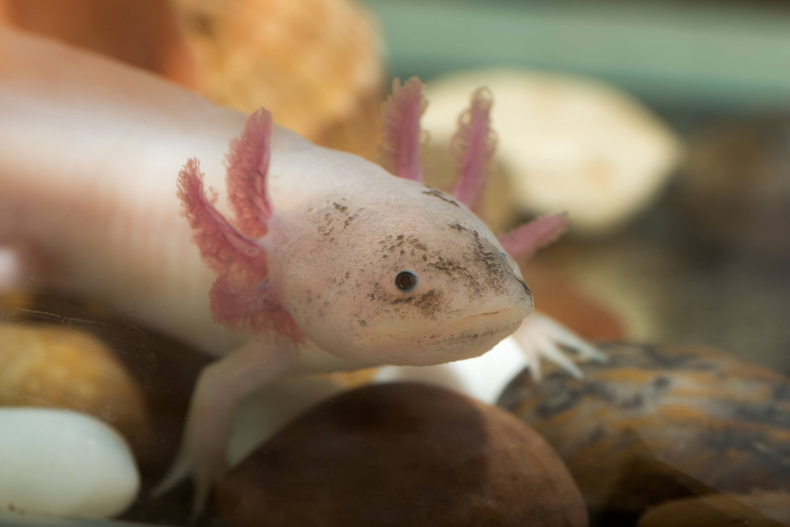3 Axolotl Characteristics That May Surprise You
The adorable axolotl is an exotic pet that is available in many states. These creatures are actually salamanders that remain in their juvenile form and never acquire the ability to live on land. Instead, this pet lodges safely inside a large aquarium where you can easily view its beautiful features. Read on to learn about three surprising characteristics of this interesting animal.
1. Axolotls Can Regenerate
Scientists are fascinated by the regenerative abilities of the axolotl, and they are still unsure exactly how the creatures can regrow parts of their bodies. In fact, the axolotl is the only vertebrate to do so. Unlike humans, axolotls can change the cells adjacent to the injured area into stem cells. This phenomenon allows the axolotl to regrow the necessary veins, skin, bones, and tissue.
Axolotls can regrow not only limbs, but also the spinal cord, heart ventricles, and even portions of their brain. This incredible salamander is the model scientists hope to use to find a way for humans to regenerate body parts.
Still, a pet axolotl is very delicate and can injure easily. For this reason, don't try to handle your pet. Instead, use a fine mesh net to scoop up your salamander if necessary. Never utilize sharp items as part of their aquarium home and stick to sand, smooth stones, and a few plants.
2. Axolotl Pets Differ From Those in the Wild
Axolotls that are bred in captivity for labs and as pets differ genetically from those in the wild, which are in danger of extinction. Axolotls are only found in canals in Xochimilco, south of Mexico City. The canals are all that remain after the vast Lake Texcoco was drained over time.
Most captive axolotls hail from a group of 34 axolotls captured from their canal habitats in 1863. Since that time, scientists in Europe and America have added a few wild genes to the mix, along with a tiger salamander. However, constant in-breeding has severely limited the gene pool. Experts believe that axolotls bred today may be vastly different genetically from those in the wild.
Axolotl pets still appear similar to those in the wild except for some color differences. Even better, they are safe from the challenges that their wild cousins face. Pollution in the Xochimilco canals dirties the water. Aggressive invasive species prey upon juvenile axolotls. Aquarium water with the right balance of chemicals and an absence of predators ensures your pet will live happily for many years.
3. Axolotls Boast Many Different Colors
Axolotls are available in a range of different colors or morphs. Wild axolotls possess a mottled morph that helps them blend into muddy background colors like gray, black, and dark green.
Sometimes a mutation in alleles, or pigment cells, occurs in an animal which results in a unique pattern or color. Breeders are able to patiently reproduce the same morph in subsequent axolotl offspring. As a result, you can pick your pet from a range of colors and patterns.
Golden Albinos
These warm-colored axolotls can range anywhere in color from orange-gold, peach, yellow, and nearly white. Their bodies boast reflective spots and speckles. Some golden albinos have a heavy covering of iridophores that make them appear clad in iridescent gold.
Green Fluorescent Protein
Axolotls with a green fluorescent protein are genetically altered with a gene from jellyfish. This gene makes an axolotl glow bright green in UV light, but appear non-descript in normal light.
Other axolotls are copper, black, lavender, and albino.
Interested in an axolotl for a pet? You may find this fascinating animal the perfect pet for you and your family. The Mottled Lotl has a variety of beautiful and captivating animals, along with the expertise you need to enjoy your pet for years. Contact us today with all of your axolotl needs.

